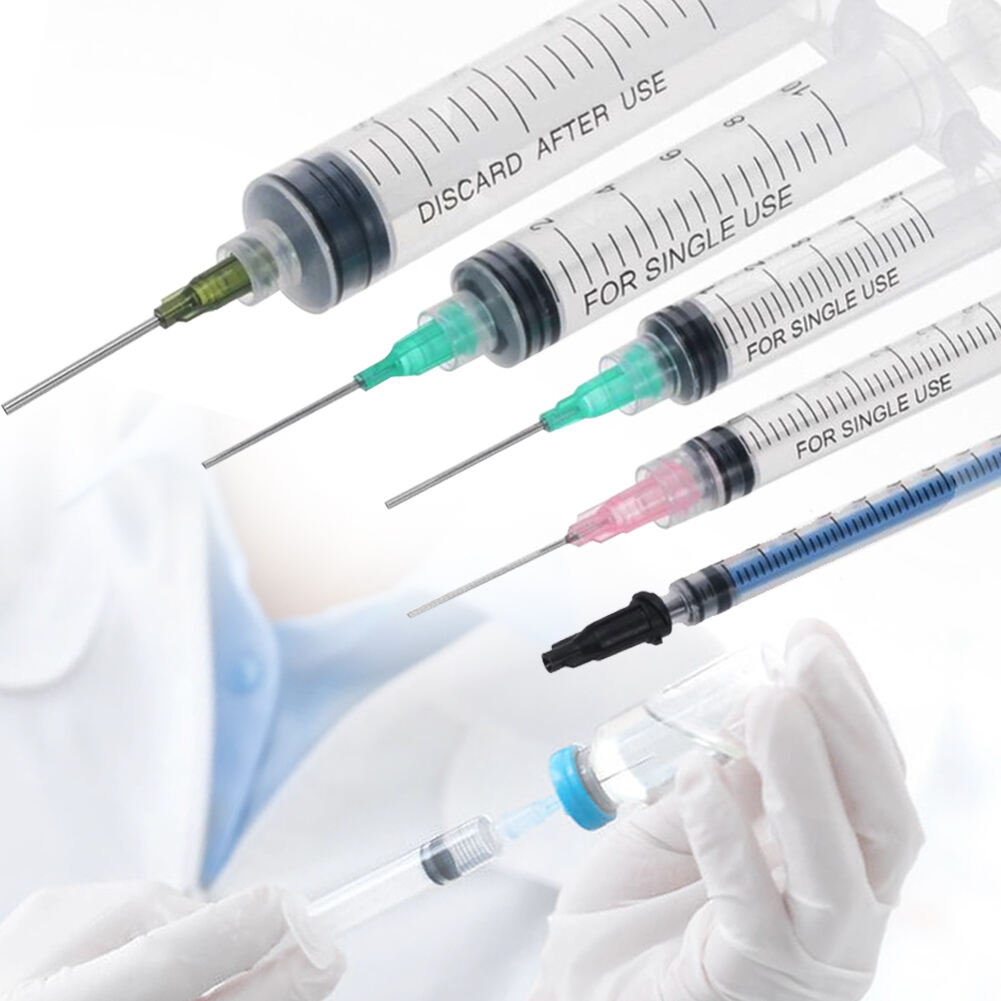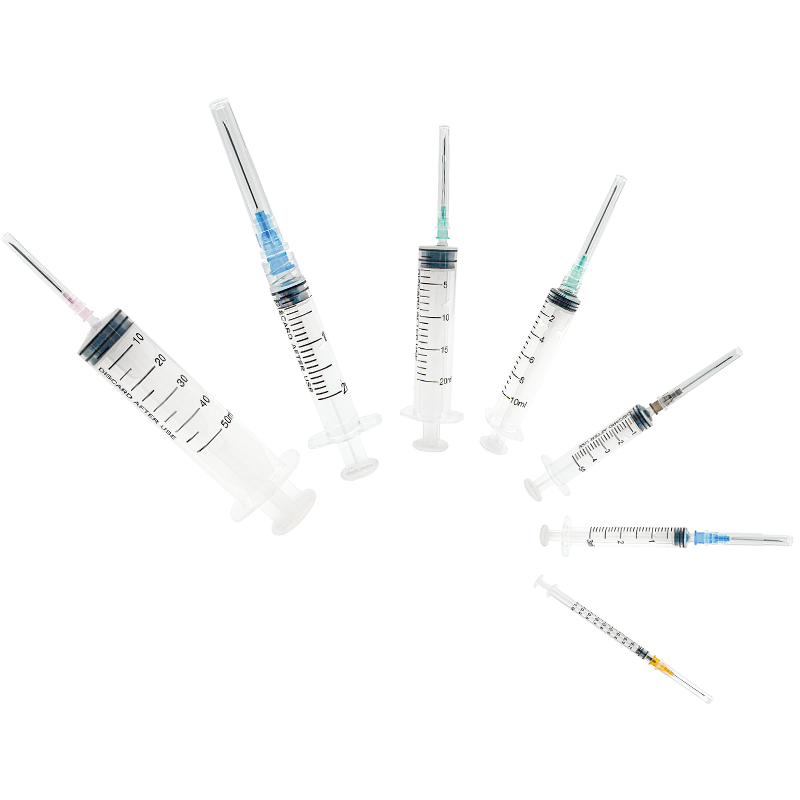Ang Ebolusyon ng Modernong Teknolohiya sa Medikal na Ineksyon
Sa larangan ng modernong pangangalagang pangkalusugan, mga syringang pang-iniksyon nagsisilbing mga pangunahing kasangkapan na nagbagal ng paraan ng pagtuturo ng medikal na paggamot. Ang mga instrumentong may tiyak na presyur na ito ay malayo nang narating mula sa kanilang mapagkumbabang simula, napalitan ng mga sopistikadong kagamitan na nagbibigay-daan sa mga propesyonal sa pangangalagang kalusugan na magbigay ng eksaktong dosis ng gamot nang may di-maikakailang katumpakan. Ang ebolusyon ng mga syring na pang-injection ay sumasalamin sa pag-unlad mismo ng agham na medikal, na nagpapakita ng ating lumalaking pag-unawa sa mga pangangailangan ng pasyente at epekto ng paggamot.
Ang mga syringang pang-iniksyon sa kasalukuyan ay representasyon ng kabuuan ng mga siglo ng imbensyon sa larangan ng medisina, na pinagsama ang ergonomikong disenyo at makabagong materyales upang maibigay ang pinakamahusay na pagganap sa mga klinika. Habang patuloy na umuunlad ang medisinang nakabatay sa presisyon, ang mahahalagang kasangkapang ito ay umaangkop upang matugunan ang mas partikular na mga pangangailangan sa paghahatid ng gamot, komport ng pasyente, at kaligtasan ng mga tagapagbigay ng pangangalaga sa kalusugan.
Pangunahing Komponente at Disenyo ng Mga Katangian
Advanced Materials and Construction
Gumagamit ang modernong mga syring para sa ineksyon ng mataas na uri ng materyales na nagagarantiya sa parehong katatagan at biocompatibility. Ang mga polimer na medikal na grado at espesyal na komposisyon ng salamin ang nagsisilbing pangunahing bahagi, na maingat na pinipili upang mapanatili ang integridad ng gamot at maiwasan ang anumang hindi gustong reaksyon. Ang transparent na disenyo ng barrel ay nagbibigay-daan sa mga healthcare provider na tumpak na makita ang antas ng dosis at suriin ang pagkakaroon ng hangin, samantalang ang espesyal na pinahiran na surface ay pumipigil sa gesekan habang gumagalaw ang plunger.
Ang mga bahagi ng karayom ay gumagamit ng sopistikadong teknik sa pagmamanupaktura, na nagreresulta sa napakatalas na dulo na pumapaliit sa pinsala sa tissue tuwing isinusulod. Ang mga advanced coating technology ay tumutulong upang bawasan ang sakit dulot ng ineksyon at mapabuti ang kabuuang karanasan ng pasyente, habang pinapanatili ang kinakailangang integridad ng istraktura para sa eksaktong paghahatid ng gamot.
Mga Mekanismo ng Kaligtasan at Pagkamakabagong
Ang mga makabagong syring na pang-injection ay mayroong maraming elemento para sa kaligtasan na idinisenyo upang maprotektahan ang mga manggagamot at pasyente. Ang mga mekanismo ng retractable needle, proteksyon sa karayom, at awtomatikong lock para sa kaligtasan ay ilan lamang sa mga inobasyon na nagpababa nang malaki sa mga aksidenteng kaugnay ng pagtusok ng karayom. Ang mga tampok na ito ay awtomatikong gumagana pagkatapos gamitin, upang matiyak ang tamang pagtatapon at maiwasan ang hindi sinasadyang muling paggamit.
Ang integrasyon ng smart technology ay nagsimula nang lumitaw sa mga bagong modelo, kung saan ang ilang syring para sa injection ay mayroong electronic dose monitoring at tracking capabilities. Ang mga advanced na tampok na ito ay tumutulong sa mga healthcare provider na mapanatili ang tumpak na mga tala at matiyak na sinusunod ang tamang protokol sa pagbibigay ng gamot.
Mga Aplikasyon sa Precision Medicine
Mga Customized na Sistema ng Pagdadaloy ng Gamot
Ang precision medicine ay nangangailangan ng eksaktong kakayahan sa dosis, at ang modernong mga syring para sa ineksyon ay nakakatugon dito sa pamamagitan ng mga makabagong disenyo. Ang mikro-graduated na mga marka at pinahusay na visibility ay nagbibigay-daan sa mga healthcare provider na mag-administer ng tumpak na dami ng gamot, na kritikal sa mga paggamot kung saan ang anumang maliit na pagbabago sa dosis ay maaaring makaapekto sa therapeutic outcome. Ang mga espesyal na patong at materyales ay tinitiyak na mananatiling epektibo ang sensitibong mga gamot mula sa pagkuha hanggang sa paghahatid.
Ang pag-unlad ng mga pasadyang dinisenyong syring para sa ineksyon para sa tiyak na aplikasyong medikal ay rebolusyunaryo sa mga protokol ng paggamot. Mula sa mga sistema ng insulin delivery hanggang sa autoinjector para sa biological therapies, ang mga espesyalisadong kasangkapan na ito ay sumusuporta sa lumalaking uso patungo sa personalized medicine at targeted treatments.
Pag-integrah sa mga Platahang Digital na Pangkalusugan
Ang pinakabagong henerasyon ng mga syring na pang-iniksyon ay may kasamang mga tampok ng smart technology na nagbibigay-daan sa maayos na pagsasama sa mga digital health platform. Ang mga konektadong device na ito ay kayang subaybayan ang oras ng iniksyon, dosis, at mga pattern, na nagbibigay ng mahalagang datos para sa mga healthcare provider upang mapabuti ang mga plano sa paggamot. Ang kakayahan ng real-time monitoring ay tumutulong upang matiyak ang pagsunod sa gamot at magbigay ng agresibong interbensyon kailangan.
Ang digital integration ay sumusuporta rin sa edukasyon at pakikilahok ng pasyente, kung saan ang ilang sistema ay nagbibigay ng awtomatikong mga paalala at feedback sa pamamagitan ng mobile application. Ang teknolohikal na pag-unlad na ito ay kumakatawan sa isang malaking hakbang patungo sa mas komprehensibo at buong-puso na pangangalaga sa pasyente.

Quality Control at Mga Pamantayan ng Regulasyon
Kahusayan sa paggawa
Ang produksyon ng mga syring na pang-injection ay sumusunod sa mahigpit na mga hakbang sa kontrol ng kalidad at mga regulasyong kinakailangan. Ginagamit ng mga tagagawa ang mga napapanahong teknolohiya sa malinis na silid at mga automated na sistema ng inspeksyon upang matiyak na ang bawat kagamitan ay sumusunod sa eksaktong mga espesipikasyon. Ang regular na pagsusuri ay nagpapatunay ng kalinisan, integridad ng materyales, at mekanikal na pagganap sa buong proseso ng produksyon.
Ang patuloy na pagmomonitor at dokumentasyon ng mga parameter sa pagmamanupaktura ay tumutulong sa pagpapanatili ng pare-parehong antas ng kalidad habang pinapabilis ang pagtugon sa anumang paglihis. Ang ganitong dedikasyon sa kahusayan sa pagmamanupaktura ay nagbibigay-suporta sa maaasahang pagganap na umaasa ang mga propesyonal sa pangangalagang kalusugan para sa mga kritikal na medikal na pamamaraan.
Pagtustos at Sertipikasyon
Ang mga internasyonal na pamantayan at regulasyon ang namamahala sa disenyo, produksyon, at pamamahagi ng mga syring na iniksyon. Kailangang mapanatili ng mga tagagawa ang sertipikasyon ng kasalukuyang Mabuting Praktika sa Pagmamanupaktura (cGMP) at sumunod sa tiyak na mga kinakailangan para sa produksyon ng medikal na kagamitan. Ang regular na mga audit at inspeksyon ay nagsisiguro ng patuloy na pagsunod sa mga pamantayang ito, na nagtitiyak ng pare-pareho ang kalidad at kaligtasan ng produkto.
Ang dokumentasyon at mga sistema ng pagsubaybay ay nagbibigay-daan sa buong pagsubaybay sa buhay ng produkto, mula sa pagkuha ng hilaw na materyales hanggang sa huling pamamahagi. Ang masusing diskarteng ito sa pamamahala ng kalidad ay sumusuporta sa kaligtasan ng pasyente at pinananatili ang integridad ng global na suplay ng medikal.
Mga Paparating na Pag-unlad at Tendensya
Mga Bagong Teknolohiya
Ang hinaharap ng mga syring na iniksyon ay may mga kapani-paniwala posibilidad habang lumalabas ang mga bagong teknolohiya. Ang mga pag-unlad sa agham ng materyales ay nangunguna sa mas sopistikadong disenyo ng karayom na maaaring karagdagang bawasan ang pagkabahala ng pasyente at mapabuti ang kahusayan ng paghahatid ng gamot. Ang mga 'smart materials' na tumutugon sa mga kondisyon sa kapaligiran o sa partikular na kadahilanan ng pasyente ay maaaring magbigay ng mas tiyak na kontrol sa pagbibigay ng gamot.
Patuloy ang pananaliksik sa mga bagong mekanismo ng iniksyon, kabilang ang mga sistemang walang karayom at mga hanay ng mikrokarayom, na maaaring magdulot ng rebolusyon sa ilang aspeto ng paghahatid ng gamot. Ang mga inobasyong ito ay nangangako na palawakin ang mga kakayahan ng mga sistema ng iniksyon habang pinapabuti ang ginhawa ng pasyente at mga resulta ng paggamot.
Mga inisyatibo sa katatagan
Ang mga konsiderasyon sa kapaligiran ang nangunguna sa pagbabago sa disenyo at pagmamanupaktura ng syring. Nililinang ang mga biodegradable na materyales at mga programa sa recycling upang tugunan ang epekto sa kapaligiran ng basurang medikal. Sinusuri ng mga tagagawa ang mga paraan upang bawasan ang basura mula sa packaging habang pinapanatili ang kalinisang sterilya at integridad ng produkto.
Ang mga adhikain sa sustenibilidad ay lumalawig patungo sa mga proseso ng produksyon, kung saan ipinatutupad ng mga kumpanya ang mga enerhiya-mahusay na paraan ng pagmamanupaktura at sinusuri ang mga renewable na mapagkukunan ng enerhiya. Ang pokus sa responsibilidad sa kapaligiran ay kumakatawan sa mahalagang ebolusyon sa pag-unlad ng medical device.
Mga madalas itanong
Ano ang nagpapahiwalay sa precision injection syring mula sa karaniwang syring?
Ang mga precision injection syring ay may mas advanced na mga marka ng kalibrasyon, espesyalisadong materyales, at modernong elemento ng disenyo na nagbibigay-daan sa mas tiyak na dosis. Madalas itong may mga tampok na pangkaligtasan at maaaring may smart technology para sa pagsubaybay at pagmomonitor ng dosis.
Paano nakatutulong ang smart injection syring sa pag-aalaga sa pasyente?
Ang mga smart injection syringes ay kayang subaybayan at irekord ang datos ng iniksyon, makisama sa mga digital health platform, at magbigay ng real-time na feedback sa mga healthcare provider. Ang teknolohiyang ito ay nagpapabuti sa pagsubaybay sa pagsunod sa gamot at nagbibigay-daan sa mas personalisadong pag-adjust ng paggamot.
Ano ang mga pangunahing katangian ng kaligtasan sa modernong mga injection syringes?
Ang mga modernong injection syringes ay may kasamang mga katangian tulad ng needle retraction mechanisms, awtomatikong safety locks, at needle guards upang maiwasan ang aksidenteng sugat sa karayom. Kasama rin dito ang mga materyales at disenyo na nagpapanatili ng kalinisan at nagbabawal ng muling paggamit.

